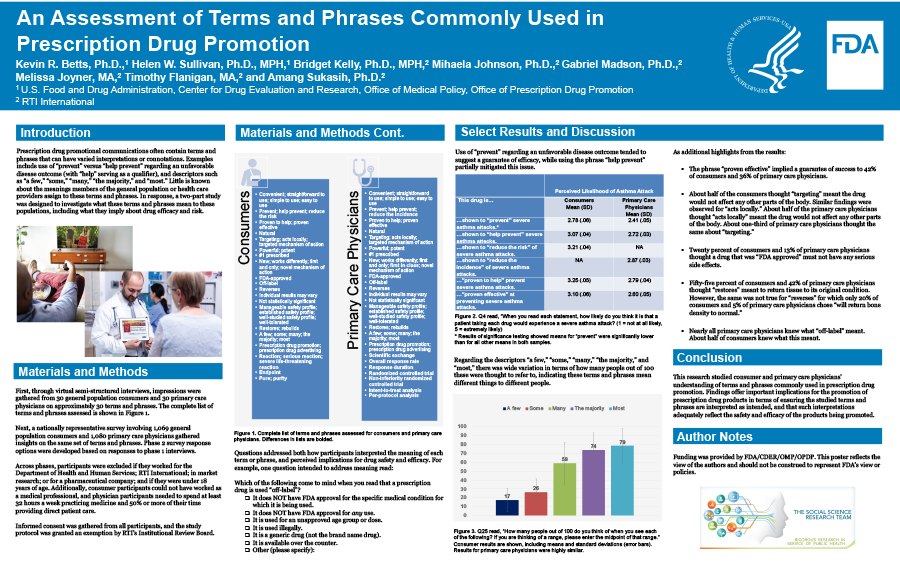2023 FDA Science Forum
An Assessment of Terms and Phrases Commonly Used in Prescription Drug Promotion
- Authors:
- Center:
-
Contributing OfficeCenter for Drug Evaluation and Research
Abstract
Prescription drug promotional materials often contain terms and phrases that can have varied interpretations or connotations. Examples include use of “prevent” versus “help prevent” (with “help” serving as a qualifier) regarding an unfavorable disease outcome, and descriptors such as “a few,” “some,” “many,” “the majority,” and “most.” Little is known about the meanings members of the general population or health care providers assign to these terms and phrases. In response, a two-part study was designed to investigate what these terms and phrases mean to these populations, including what they imply about prescription drug efficacy and risk. First, through virtual semi-structured interviews, impressions were gathered from 30 general population consumers and 30 primary care physicians on approximately 30 terms and phrases. Next, a nationally representative survey involving 1,069 general population consumers and 1,080 primary care physicians gathered insights on the same set of terms and phrases. As sample findings, use of “prevent” tended to suggest a guarantee of efficacy, while using the phrase “help prevent” instead partially mitigated this issue. Regarding the descriptors “a few,” “some,” “many,” “the majority,” and “most,” there was wide variation in terms of how many people out of 100 these were thought to refer to, indicating these terms and phrases mean different things to different people. These and other findings from the research offer important implications for the promotion of prescription drug products in terms of ensuring the studied terms and phrases are interpreted as intended, and that such interpretations adequately reflect the safety and efficacy of the products being promoted.

